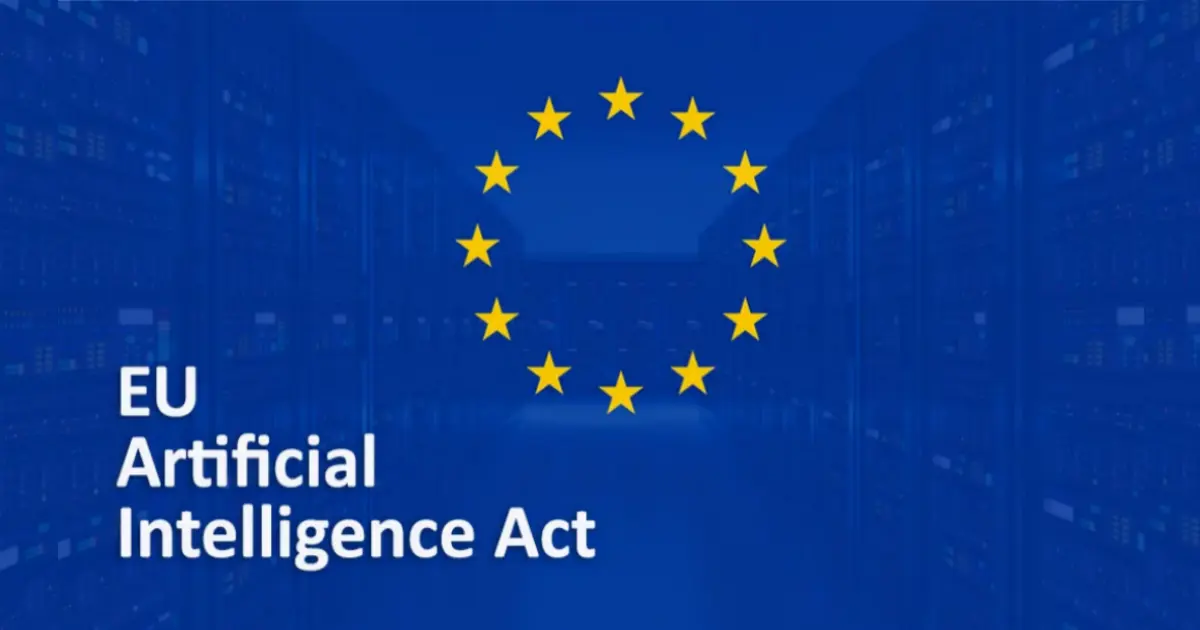How the EU AI Act Will Impact Healthcare and Pharma: Lessons from a Game-Changing Webinar
The EU Artificial Intelligence Act (EU AI Act) is the newest and most comprehensive framework for regulating AI globally to date. As someone working in the healthcare and pharmaceutical industry, I recently had the opportunity to join a webinar hosted by the Transatlantic Policy Network (TPN) and the European Commission, the key players in shaping this regulation.
This session was a game-changer for me. It illuminated how the Act—a dense and complex legal text—could be understood and navigated, especially for industries where the stakes are as high as in healthcare and pharmaceuticals. From diagnostics to drug development, AI is rapidly growing and embedding itself in our work and business, and this regulation is set to change how we operate. I’m sharing what I learned to help others in our field better understand and prepare for this monumental shift.
Why the EU AI Act Matters
The EU AI Act is the first comprehensive attempt to regulate AI worldwide, and it doesn’t just apply to companies within the EU. If your AI system is used in the EU, you’re within scope. This means that even non-EU healthcare and pharma organizations will need to comply.
The Act classifies AI systems into risk categories:
- Unacceptable Risk: Prohibited systems, such as those using subliminal manipulation or social scoring.
- High Risk: Includes many healthcare and pharma applications, like diagnostic tools and drug discovery algorithms.
- Limited or Minimal Risk: These systems require transparency but face fewer controls.
For our industry, the focus is firmly on high-risk systems—tools that impact patient outcomes, public health, or sensitive data. The stakes are high, and so are the penalties for non-compliance.
⚠️ CAUTION: Penalties for non-compliance can reach up to 7% of global annual turnover. Organizations need to prioritize readiness to avoid these significant financial risks.
Key Takeaways from the Webinar
Here are the most important insights I gained from the session, tailored for healthcare and pharma professionals:
1. High-Risk AI Systems in Healthcare
High-risk systems must meet strict requirements. For example:
- Diagnostic tools need thorough risk management and human oversight to ensure safe deployment.
- AI in clinical trials must follow stringent data governance to avoid biases that could affect outcomes.
2. Data Governance is Non-Negotiable
One thing became clear: data quality and governance are foundational. The Act requires robust documentation of how data is collected, processed, and used in AI training and validation. For pharma, this means ensuring datasets are representative and free from bias—no shortcuts.
3. A Lifecycle Approach to Compliance
Compliance isn’t a one-time exercise. AI systems must undergo continuous monitoring to ensure they remain safe and effective. For example, an algorithm used in patient diagnostics must be regularly checked for accuracy and fairness as it evolves.
4. Practical Steps for Readiness
The webinar provided a practical roadmap that I found especially useful. Not only did it offer clear and unambiguous steps to support implementation, but it also made navigating and understanding the dense legal text of the Act much easier.
Step 1: Build an AI Model Inventory
Start by creating a repository of all AI systems in use or development. This includes systems purchased from third-party vendors. For healthcare organizations, this might involve cataloging everything from diagnostic tools to administrative AI.
Step 2: Classify AI Systems by Risk
Use the Act’s risk framework to categorize your AI systems. Tools used for patient diagnosis or drug approval would likely fall under the high-risk category.
Step 3: Implement Risk Management
Develop a structured risk management plan that includes:
- Lifecycle risk assessment.
- Continuous monitoring for errors and biases.
- Establishing human oversight mechanisms.
Step 4: Focus on Data Governance
Ensure datasets used in training and validation are representative, high-quality, and free from biases. The Act emphasizes strict data documentation, particularly for high-risk systems.
Step 5: Engage Stakeholders
Involve compliance teams, developers, and healthcare professionals early to align processes with the Act’s requirements. Training staff to understand AI limitations and their role in oversight is critical.
Step 6: Prepare for Audits
Register high-risk AI systems in the EU database and maintain robust documentation to streamline conformity assessments.
How This Will Affect Healthcare and Pharma
The EU AI Act will reshape how AI is developed and deployed in our industry in several key areas:
- Drug Discovery: Algorithms predicting efficacy must meet data transparency and risk management standards.
- Diagnostics: AI-powered imaging tools need continuous oversight to avoid errors in life-critical situations.
- Supply Chain: AI optimizing logistics must comply with cybersecurity and resilience requirements to safeguard delivery.
For those of us working in healthcare and pharma, this isn’t just about compliance—it’s about setting a higher standard for safety, fairness, and trust.
Final Thoughts: From Complexity to Clarity
Before the webinar, the EU AI Act felt like a daunting legal maze to me. Now, I see it as a necessary framework that will ultimately enhance patient care and innovation. The Act may be complex, but breaking it down into actionable steps makes it manageable and hopefully this post has helped you do the same.
For healthcare and pharma organizations, the time to act is now. Whether you’re a developer, policymaker, or business leader, understanding and preparing for the EU AI Act is essential. Let’s embrace this as an opportunity to lead the way in ethical and responsible AI.
What are your thoughts? Let’s discuss how we can navigate this new landscape together.
